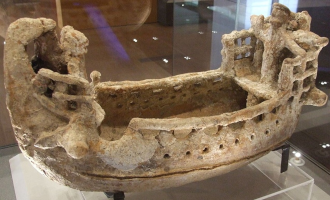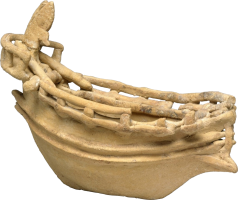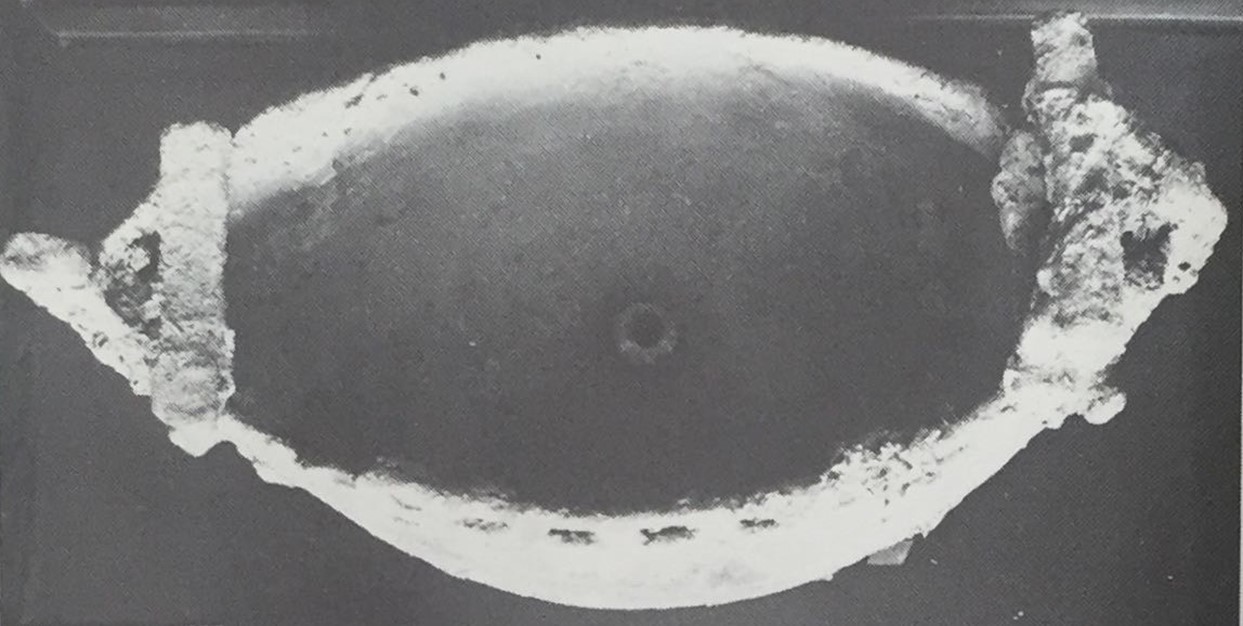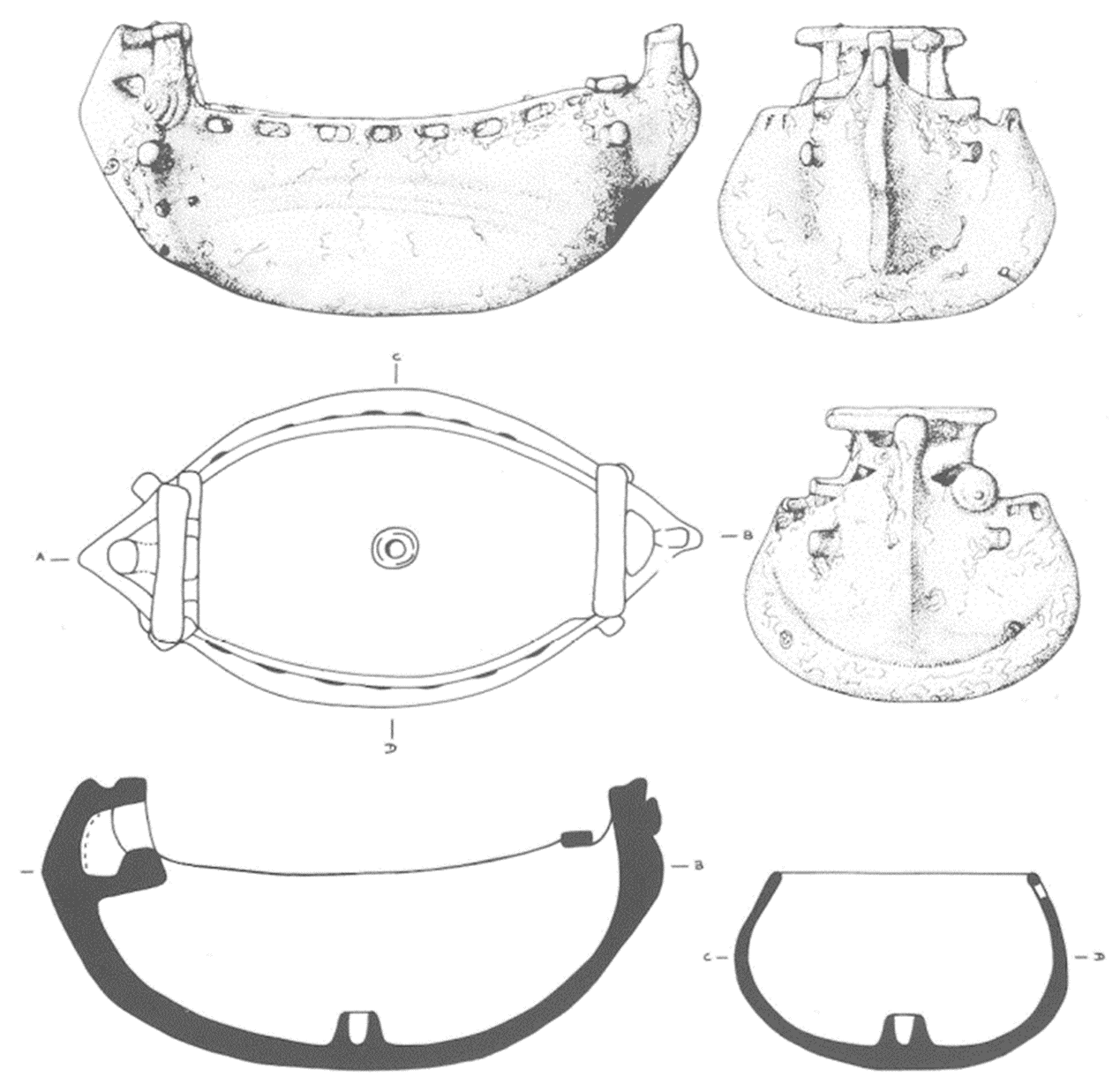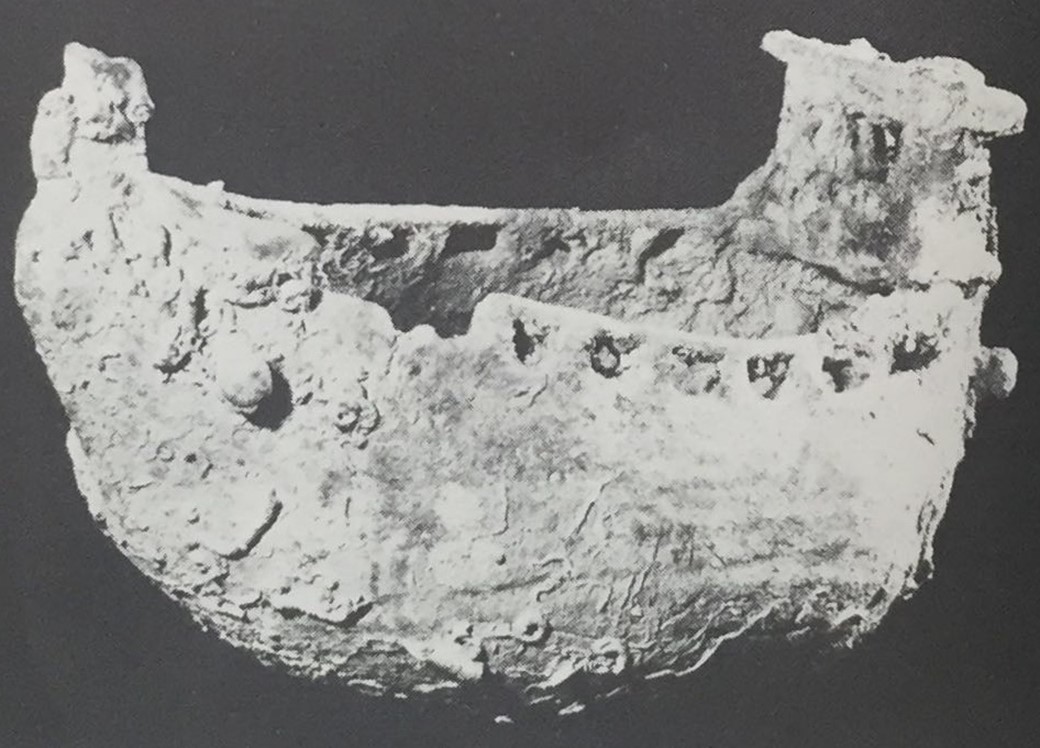Deep and very beamy crescentic hull with an incurving sheer. Immediately below the gunwale is a row of evenly spaced horizontal holes running from stempost to sternpost on either side, 7 and 8 on port and starboard respectively. Some of these holes are square while others are more rounded. Behind the last one on starboard closest to the stern is what appears to be a seashell impression. The stempost protrudes 3 cm above the gunwale. Immediately behind the stempost is a cross-beam (9 cm long, 3 cm wide) placed on the gunwale, its extremities slightly protruding outside the hull. The stern has a deck-house with a poop-deck protruding 6 cm above the gunwale. This deck-house rests on a cross beam (9cm long, 2 cm wide) placed on the gunwale, its extremities slightly protruding outside the hull. It is surmounted by a similar cross-beam. Between these beams are two pillars (3 cm high, 2 cm wide), one on each side - which frame an entrance to the deck-house. Behind the pillars are two triangular windows. The ends of four through-beams protrude from the hull-planking on either side (1 cm diameter, 1 cm outside hull): two below the bow's cross-beam, and two below the stern's deck-house. Westerberg interprets these as catheads, but admits this explanation is not satisfactory for the pair at the stern. The stern cross-beam has hollows on both sides, possibly indicating supports for steering oars. There is a raised mast-socket amidships (3 cm high, 1.5 cm diameter), with an oval depression at the top.
Ship model
C21
Debated: LBA (Westerberg); Cypro-Geometric I (Karageorghis); Cypro-Archaic (Basch)
Amathus, found in the sea by fishermen
L: 45 cm; beam amidships (at water line): 22 cm; beam amidships (between gunwales): 19 cm; H (from bottom to top of gunwale): 15 cm
Terracotta model with heavy marine concretion. Fainted traces of black decoration on the port side. Part of the port gunwale and small part of the stempost missing.
Private Collection of Nicos Kirzis. On display in Park Beach Hotel, Limassol
Basch 1999: 60-61, figs. 20-22; Carbillet 2005: 82, 83, 88, fig. 6; Dolan 2023: 348-351, no. 15; Karageorghis 1993: 74, no. 1; Westerberg 1983: 14, no. 8
Basch raises the possibility that the object was intended as a libations receptacle shaped in the form of a ship rather than a boat model. This would explain according to him why the interior of the ship is devoid of details except for the mast-head despite the fact that the hull and posts are otherwise rendered with great attention to detail. This would also explain why the model is so beamy, perhaps exaggeratedly so. His theory is taken up by Carbillet, where she similarly seeks to attribute it a function as a libation vessel that was thrown out at sea in honour of a divinity with maritime associations.
Basch, L. 1999. “Un modèle de navire chypriote du VIe siècle av. J.-C. trouvé en mer au large d'Amathonte,” BCH 123: 43-64.
Carbillet, A. 2005. “Cérémonies autour du thème de la navigation à Amathonte,” CCEC 35: 77-88.
Karageorghis, V. 1993.The Coroplastic Art of Ancient Cyprus II, Late Cypriote II-Cypro-Geometric III. Nicosia: A.G. Leventis Foundation.
Westerberg, K. 1983. Cypriote Ships from the Bronze Age to c. 500 B.C. (SIMA, Pocket-books, 22). Göteborg: P. Åströms förlag.


